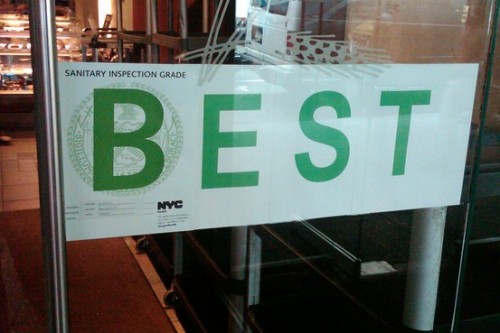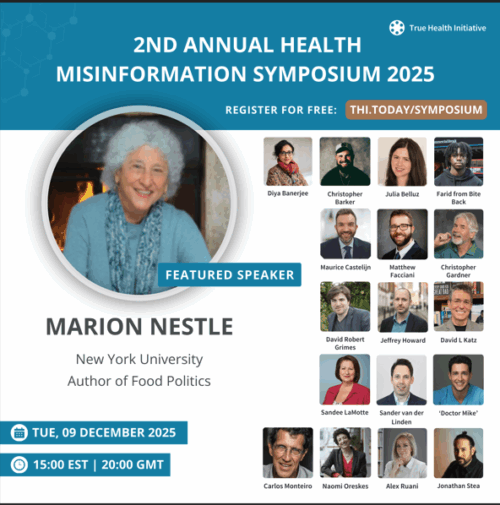CDC halves foodborne illness count. But why now?
Food politics in action: The CDC announced yesterday that its scientists had recalculated the extent of foodborne illnesses in the United States and cut the estimates by nearly half.
The old mantra (1999):
- 76 million cases of illness
- 325,000 hospitalizations
- 5,000 deaths
- 48 million illnesses
- 128,000 hospitalizations
- 3,000 deaths
But no, the new figures do not mean that the food supply is safer. The reduction, says the CDC, is no cause for celebration. Instead, it only means that tracking methods have improved. As the editorial accompanying the CDC reports puts it,
Bottom line: with the exception of Vibrio spp., things don’t seem to be getting worse; however, after the initial decline since the USDA regulatory changes in 1995, one does not see evidence of sustained improvement.
The Politics
OK. Very interesting. The old estimates weren’t as good as the new estimates. But why announce what appears to be a huge reduction in foodborne illness now, especially if it really isn’t a reduction?
Is the CDC unaware that a highly contentious food safety bill still lingers in Congress, with only days to go until the congressional term ends?
I sat in on the press conference call yesterday and heard CDC’s weak attempts to minimize the drop in numbers and maximize the fact that foodborne illnesses are still way too high (“one in six Americans”).
I’m not the only one concerned about the timing. The headline and first sentence in Food Chemical News:
Lower CDC foodborne illness numbers could undercut food safety bill. Just as Congress seems to be on the edge of passing the biggest food safety bill in decades, the Centers for Disease Control and Prevention released today two new studies that reduce the previous estimates of people suffering from foodborne illness in the United States.
CDC officials must be worried. I hear rumors that CDC press people are complaining to reporters who lead off their stories with the reduced numbers, as most did.
William Neuman in the New York Times, for example, correctly reported:
The federal government on Wednesday significantly cut its estimate of how many Americans get sick every year from tainted food. But that does not mean that food poisoning is declining or that farms and factories are producing safer food. Instead, officials said, the government’s researchers are just getting better at calculating how much foodborne illness is out there.
And here is USA Today’s Beth Weise, also correctly:
Food isn’t making us as sick as we thought — almost 40% less, in fact. It’s not that the numbers of foodborne illnesses have suddenly decreased, but the Centers for Disease Control and Prevention says its methods for counting have become more precise.
Weise noted: “The new figures are long awaited in the food industry, which believed the previous numbers to be too high.”
Right. That’s why the timing isn’t so good.
Why is the CDC doing this now? Maybe this is just a matter of journal publication dates but it would be painfully ironic if CDC’s “better” numbers undercut enactment of the food safety bill.
The Science
That said, the CDC has done a splendid job of making the rationale for these estimates accessible on its main web page for this topic. The page links to the two scientific papers, one on estimates of illnesses caused by major pathogens, and the second on unspecified (unidentified) agents.
CDC also presents a detailed table comparing the 1999 and 2010 estimates.
But the 2010 estimates, like the 1999 estimates, are still guesses—just better ones based on methods that were not available in 1999.
Much remains uncertain about the extent of foodborne illness, because they are so difficult to track:
- Many pathogenic organisms cause foodborne illness; some are characterized, some not.
- Gastrointestinal illness is not always due to food poisoning.
- Most people with foodborne illnesses do not report them to doctors.
- Doctors rarely take stool samples.
- Laboratories test stool samples for only the most frequent pathogens.
- Laboratory tests for pathogens are not always reliable.
Indeed, the CDC estimates that 80% of foodborne illnesses are due to unspecified causes, as are 56% of foodborne hospitalizations and deaths.
The CDC’s conclusion: the burden of foodborne illness is high and keeping pathogens out of the food system is still a good idea.
That, of course, is precisely why it is so important that Congress enact the food safety bill. Its measures require preventive controls that should apply to pathogens, known and unknown.
Let’s hope Congress understands that foodborne illness is still a serious problem, does not misinterpret the CDC’s new numbers, and passes the legislation as its gift to the new year.



